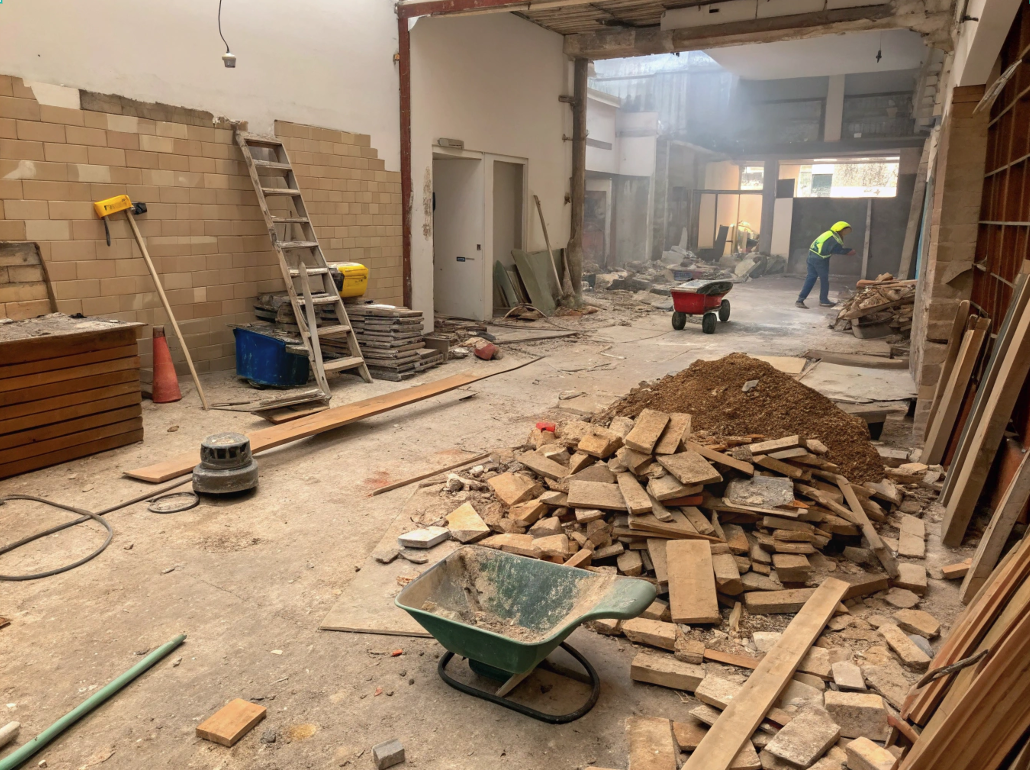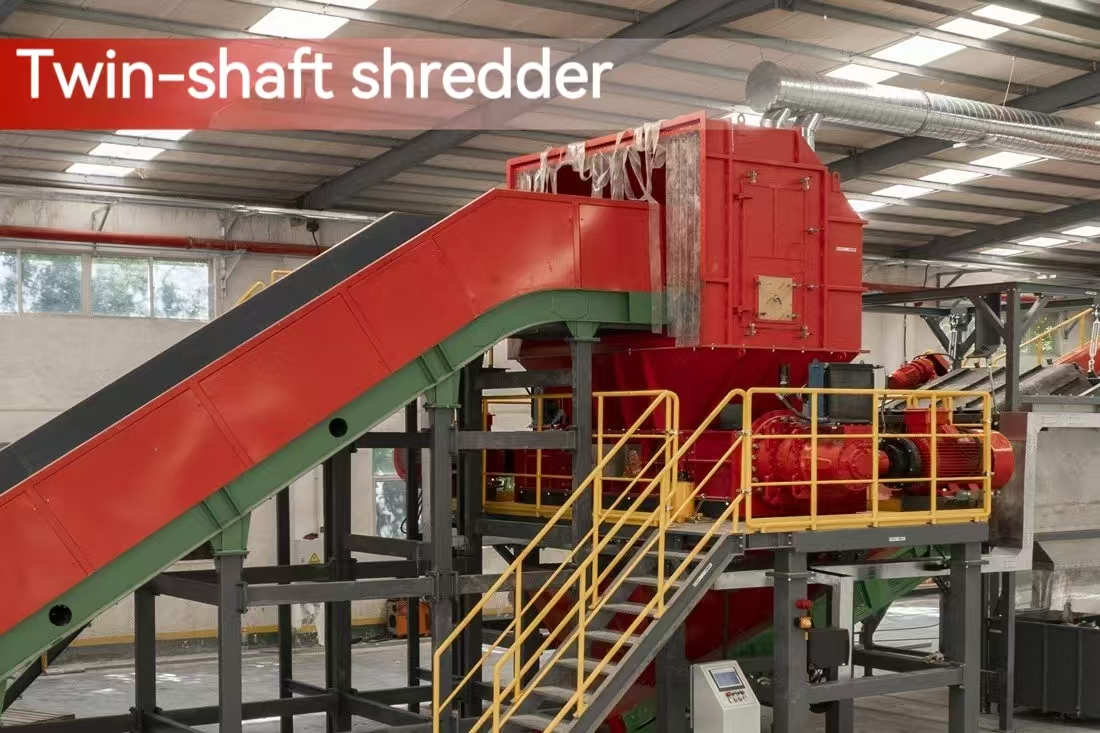Resource Utilization of Construction and Demolition waste

Mechanisms for generating construction and demolition waste originate mainly in the construction, renovation, maintenance and demolition of buildings. Whether it is a new construction project, demolition of a building or renovation of an old building, it will involve the generation of a large amount of waste.
These wastes include leftovers from various types of construction materials, broken materials, construction materials that cannot be reused, etc. With the expansion of the scale of modern construction projects, the amount of construction waste generated has shown exponential growth, especially in the context of accelerated urbanization and the renovation of old cities, where the amount of demolition waste has risen sharply.
Construction waste is generated from construction waste from new or renovated buildings and typically includes large quantities of concrete, bricks, plasterboard, wood, steel and glass. Demolition waste, on the other hand, refers to the waste generated during the demolition of a building, and is more complex in composition, as it may contain glass, metal, wood, plastics and hazardous substances (e.g., asbestos) in addition to concrete and bricks.
In addition, with frequent building renovations, renovation waste is also one of the important components of C&D waste, which usually consists of renovation materials such as wood, paint, coatings and plasterboard.

The main components of C&D waste
The composition of construction and demolition (C&D) waste is extremely complex, and different types of construction activities result in differences in waste composition. In general, the main components of C&D waste include the following categories:
Concrete: Concrete is one of the most common components of construction waste, especially in demolition projects, where concrete waste from old buildings occupies a large proportion. Concrete wastes usually include gravel, sand and cement. They mostly come in the form of debris or powder during the demolition process.
Brick: Brick and plasterboard are also generated in large quantities during building demolition, especially in the demolition of older buildings where brick waste is very common.
Timber: Timber is widely used in construction and renovation processes, including timber framing, flooring, doors and windows, and the demolition and renovation process generates large quantities of timber waste.
Metals: Metallic materials such as steel and aluminum alloys are widely used in building structures and decoration, especially in industrial buildings and high-rise buildings. Metallic materials can be recycled, but they also need to be separated and processed.
Glass and ceramics: Ceramic and glass materials such as window glass, bathroom fixtures, kitchen appliances, etc. in buildings generate a lot of waste during demolition and renovation.
Plastics and synthetic materials: Plastics and asbestos are also common in construction, especially in some older buildings where the use of asbestos materials can pose serious health hazards.

Global C&D waste generation trends
With the acceleration of urbanization globally, the generation of construction and demolition (C&D) waste continues to grow, especially in developing countries. The amount of C&D waste generated varies from region to region due to different levels of development of the construction industry and urbanization.
United States: The United States has one of the most developed construction industries in the world, generating 600 million tons of C&D waste annually, mostly from construction and demolition activities, of which about 455 million tons are effectively recycled and 145 million tons are sent to landfills.
According to the U.S. Environmental Protection Agency (EPA), C&D waste accounts for about 25 percent of the total U.S. solid waste. Despite the high rate of recycling of C&D waste, a significant amount of waste is still sent to landfills, mainly due to mixed waste from demolition and material contamination.
Europe: In Europe, C&D waste generation is equally large. According to Eurostat, construction and demolition (C&D) waste accounts for more than 30% of all waste in the EU. There are large variations between countries, but the overall trend shows that the amount of C&D waste is increasing year on year as the construction sector grows. Germany, the UK and France are among the countries in the EU that generate a large amount of C&D waste.
Asia: C&D waste generation in Asia has grown significantly in recent years. China, India and Japan are the main generators of construction waste in the Asian region.
The rapid development of the construction industry in China and the high level of demolition and renovation activities have led to a year-on-year increase in C&D waste generation. According to China's statistics, about more than 2 billion tons of construction waste is generated annually, most of which is demolition waste.
India and Japan are facing similar problems, and although their respective C&D waste generation is slightly less compared to China's, the growth rate is quite rapid.

Environmental hazards of C&D waste
Construction and demolition (C&D) waste harms the environment in many ways. Firstly, the large amount of C&D waste deposited will take up a large amount of land resources, especially in landfills in low-density areas, which are often filled to capacity, forcing the waste to go into temporary landfill sites, which in turn affects the ecological environment.
Secondly, C&D waste contains a large amount of materials that are difficult to degrade, such as plastics, asbestos and chemical paints, etc., which may leak into the soil and groundwater during the landfilling process, causing pollution.
A large amount of construction materials in C&D waste, especially concrete and bricks, are often incinerated or landfilled if they cannot be recycled effectively. These disposal methods release toxic gases that pollute the air and threaten human health.
In addition, large amounts of carbon dioxide and other harmful greenhouse gases may be released when waste is incinerated, exacerbating global climate change.

Recycling and Resourcefulness of C&D Waste
Recycling of C&D waste not only reduces the amount of waste and environmental pollution, but also effectively transforms waste materials into valuable resources. Construction waste can be sorted, cleaned, crushed, etc., and transformed into raw materials such as recycled aggregates, recycled wood, metals, plastics, etc., which can be used to produce new products or be reused in construction projects.
1. Methods of reusing construction waste
Recycling of construction waste is possible with proper organization and planning. The U.S. Environmental Protection Agency's Sustainable Management of Materials (SMM) program offers a variety of effective ways to reuse resources.
For example, fixtures such as doors, windows, and appliances can be removed from an old building and moved to a new site, and pre-cut lumber can be fabricated into small wooden components, avoiding the need to cut from whole pieces.
Bricks and concrete can be reused as aggregate for new concrete or as a driveway base; paint can be remixed for reuse, and packaging materials can be returned to suppliers for reuse.
Asphalt and concrete can be recovered on site and support the construction of new roads and sidewalks, and porcelain is crushed and can be resold to tile manufacturers for use in the production of tiles with high levels of recycled materials.
Steel can be permanently recycled, wood can be processed into particle board or soil protection materials, and even carpet and insulation can be reused to produce padding and fiberglass tiles.
2. Recycling process for C&D waste
Collection and transportation: Construction waste is collected and transported to a recycling treatment plant.
Sorting and separation: Once the waste arrives at the treatment plant, it is sorted by manual or mechanical means to separate different types of waste, such as wood, metal, glass, plastic, etc.
Crushing and Grinding: Construction waste such as concrete and bricks are crushed into smaller pieces for subsequent processing and utilization.
Metal Separation: Recycling of metals by separating them from other materials by means of magnetic or eddy current separators.
Wood processing: Wood waste can be shredded, cut and used as biomass fuel, mulch or recycled wood.
Final disposal: The treated material can be made into recycled aggregates, building materials, etc. for use in the construction of new buildings.
3. Production of RDF
Some non-recyclable construction waste can be processed through refuse derived fuel (RDF) technology. These non-recyclable materials can be converted into fuel after certain treatment for use in industries with high energy demand, such as power plants or cement factories. Through RDF technology, not only can we reduce the amount of waste going to landfills, but we can also effectively recover energy and promote the recycling of resources.
4. Other resourcing technologies
Resource utilization of C&D waste can also be achieved by other means, such as biomass conversion (e.g. composting or biomass fuel production) and incineration. Whether it is reuse of concrete, recycling of wood, or smelting of metals, it can effectively reduce dependence on raw materials, lower production costs, save energy, and reduce environmental pollution.

Harden's solutions for C&D waste
Harden Machinery Ltd. has developed a construction and renovation waste RDF/SRF alternative fuel preparation system for the characteristics of construction and renovation waste.
Through a series of refined processes, including crushing, screening, magnetic separation and wind separation, the system effectively separates debris such as sand, gravel, soil and metal in the renovation waste, and ultimately converts lightweight combustible materials into RDF/SRF alternative fuels with high calorific value.
In this process, the metals, sand and gravel screened out by the system can be recycled and reclaimed for treatment, while the generated RDF/SRF alternative fuel can be sold to coal-fired enterprises, such as cement factories and power plants, as an alternative to traditional coal.
This not only helps the resourceful treatment of construction and renovation waste, but also brings more than 30% revenue enhancement for related enterprises.




In addition, Harden Machinery Ltd. has constructed a total solution for the resource utilization of construction and renovation waste.
According to different vibrating screen and tension screen component screening systems, construction and renovation waste is sorted by size to obtain powder and aggregate of different sizes.
Recycled resources such as cardboard, scrap metal, plastics and wood can be recovered through processes such as manual sorting, intelligent sorting and magnetic separation. And the use of wind screening can create lightweight materials that are alternative fuels to SRF, effectively reducing construction and renovation waste to landfills and achieving resourcefulness.
Harden's construction and renovation waste resource recovery system boasts a high degree of automation and large throughput, with precise sorting of the following output products:
Recycled Construction Aggregate: In line with the tehnical specifications for recycled aggregates, aggregates of different particle sizes are used following the screening process.
Combustible materials: transported externally to waste incineration facilities for energy generation or processed into RDF combustion rods for sale.
Magnetic metals: subject to recycling.
Wood: can be recycled or sold to biomass energy plants.
Through the above comprehensive measures, Harden Machinery Ltd. aims to effectively promote the resource utilization of construction and renovation waste.

